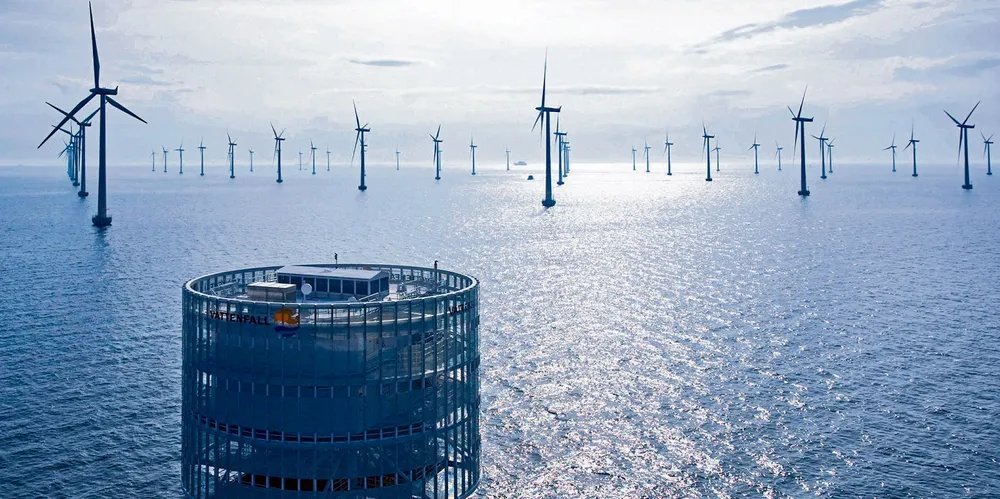Nuclear's sunset could spur new dawn for Swedish offshore wind power plans: Aegir
Legislation under consideration would shift cost of grid connection for future wind projects at sea to TSO Svenska Kraftnät, paving way for 8GW build to 2030, says analyst

Sweden’s expected-to-accelerate wind-down of its network of nuclear power plants could spur the expansion of the country’s offshore wind fleet, with as much as 8GW seen turning by the end of the decade, according to a new report form Aegir Insights – but this hinges on transmission system operator Svenska Kraftnät starting to pay for grid connections for the coming wave of utility-scale projects and a historical municipal veto being scotched.
Green is the new black. Subscribe to Accelerate
Get the market insight you need into the global oil & gas industry's energy transition – from the new newsletter from Upstream and Recharge. Sign up here
Proposed national legislation – which returns to parliament today after a comment period – will be key to the acceleration and size of ambition of Sweden’s clean-power capacity at sea, presently made up of four wind farms totalling just over 200MW yet where a potential pipeline of over 20GW of projects is waiting to be uncorked, said the Copenhagen-based analyst group.
“As these constraints are addressed at least partly by the proposed new legislation as well as efforts to streamline the permitting process, we expect build-out to begin soon and result in [new] active offshore wind farms around 2025-2026.
“The technical potential for floating is bigger than fixed-bottom, but due to favourable costs for onshore and fixed-bottom a floating market is unlikely before 2050,” she added.
The impact of a planned grid-wide spending programme by Svenska Kraftnät – needed to update one of Europe’s oldest transmission networks in line with the country’s energy transition strategy – could also help “pave the way for offshore wind build-out picking up momentum in August 2021,” Nørgaard highlighted.
Sweden – which has closed half of its 12 nuclear plants in the last decade but still relies on atomic energy for 30% of national total electricity demand – has three offshore wind plays, in the Gulf of Bothnia, the rest of the Baltic Sea and Skagerrak/Kattegat, where gusts blow at a healthy 7-10 metres per second on average and water depths are spread evenly between areas of under 60 metres and those in 60-200 metres, pointing to a 50:50 split between fixed and floating projects.
But despite the fact that offshore wind power is forecast to flow at a levellised cost of energy of around €47/MWh ($57/MWh) from first utility projects off Sweden – and fall a further 15% by 2040 when the country aims to have 100% renewable production to meet climate targets, Stockholm needs to overcome a legacy of slow-rolling planning processes in which municipalities’ veto powers have so far derailed the majority of proposed renewable energy projects.
“If the nuclear power plants are phased out in 2025–2035 instead of 2038–2044 [as is proposed by the Swedish Energy Industry (SEA)], which could be the reality in order to reach 100% renewable production by 2040, investments in new energy sources need to happen sooner,” said Nørgaard.
She noted that “avoiding this scenario, [where] Sweden would have less production than usage already in 2032, [will mean] investments corresponding to 75TWh, approximately 19GW, must be made”.
“Sweden does not have any policies nor explicit goals in place for offshore wind, even though wind and hydro power are suggested to be the keys to obtaining the climate goals,” Nørgaard added.
A veto held by municipalities in Sweden on onshore and offshore wind farms planning approvals – which led to only 37% of the 250-plus applications from 2014-2020 winning permission to build – has been “a major obstacle”, she said, acknowledging that though there have been suggestions the government is considering dropping the veto, “no decision [has] yet” been taken.
“Without the municipality veto and developers holding back in the absence of subsidies, the permitting process [for offshore wind projects] could be as short as five years,” Nørgaard said.
The main drivers for the shift to offshore wind power remain rooted in post-nuclear energy security, the Aegir report spotlights, with Sweden’s domestic industrial contractor base unlikely to benefit from significant economic development given the mature offshore energy supply chains in neigbouring Denmark, Germany and Norway.
“At least ten harbours fulfil basic requirements for being a suitable harbour for offshore wind build-out [in Sweden], and many more have the potential,” said Nørgaard, “Still, customised harbours in nearby countries would most likely be used.”